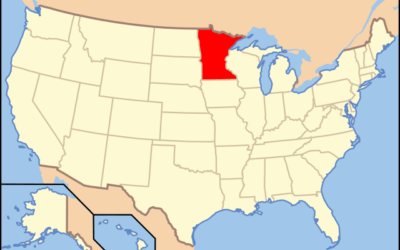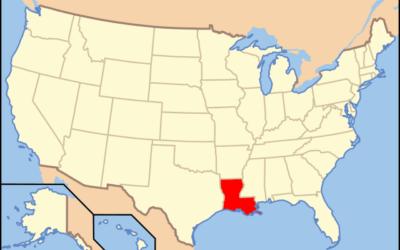
Dushaan Gillum
Incarcerated Artist
Hi,
My name is Dushaan.
I am from Honolulu, I am 38 and I am doing an 80 year sentence in Texas.
Writing is my refuge. I have just completed three years in segregation where I wrote a book of poems about the life, love and loss. I am a conscious thinker, environmentalist, progressive who loves humans of all hues. If you would like to write me I would love to write you. I have just gotten over Covid 19 and that experience help me to understand how fragile life is and how I have no control of what happens to me in here.
Help me write my words into the sands of life while my feet are still leaving prints on the earth.
Dushaan
Dushaan Gillum #1256533
Wynne Unit 810
F.M. 2821
Huntsville, Tx 77349
Free Taylor
Taylor is serving LWOP since the age of 20 he is rehabilitated, we ask for a release date. Sign this Petition What is this petition about? by Taylor Conley Thank you from the bottom of my heart for all the support. I have some news I would like to share with you. My...
Mass Incarceration: Nebraska’s Reality
Nebraska incarceration poses serious challenges, with 11,000 individuals imprisoned and racial disparities starkly evident. Black Nebraskans face incarceration rates nine times higher than white residents, while Latinos are jailed at twice the rate. Organizations advocate for policy reforms to address these issues, but resistance from the Nebraska Attorney General hampers progress. Balancing justice and fairness remains crucial as Nebraska grapples with these daunting incarceration figures. Will change come for Nebraska’s justice system?
Facts About Montana’s Incarceration Problem
Montana’s incarceration system faces significant challenges, with an alarming prison population rate of 758 per 100,000 residents. This rate surpasses any democratic nation and highlights systemic issues. Notably, indigenous people are overrepresented in Montana’s prisons, constituting a significant portion of those incarcerated. The state’s reliance on private facilities raises concerns about the prioritization of profit over justice. Addressing these issues is crucial for reform and improving outcomes for all affected by Montana ncarceration.
Understanding Mississippi’s Mass Incarceration
Mississippi’s incarceration crisis is alarming, with the prison population expected to exceed 22,000 by 2023. Despite common beliefs, drug offenses account for only 18% of cases, highlighting the state’s harsh sentencing laws. Significant racial disparities persist, with Black residents facing nearly five times the imprisonment rate of white residents. The parole board’s low grant rates exacerbate the issue, urging Mississippi to reform its approach to incarceration and create a more equitable justice system.
Facts on Minnesota’s Incarceration Rates
Minnesota’s incarceration rate of 323 per 100,000 residents highlights a pressing issue. With 17,500 people currently incarcerated, the state faces a significant challenge. Beyond the numbers, Minnesota’s criminal justice system supervises 88,700 individuals on probation or parole, signaling a broader mass incarceration problem. Programs like the Healthy Start Act and the Prison Doula Project offer hope, especially for incarcerated women, aiming to address the complexities of Minnesota incarceration and improve public health outcomes.
Maine Incarceration: Key Facts
Maine’s incarceration rate is alarmingly high, surpassing many democratic countries with 272 per 100,000 people. The state faces a growing crisis with over 3,500 individuals in prison and significant racial disparities, as Black people are imprisoned at 9.2 times the rate of white people. This troubling situation highlights systemic biases rooted in current policies. Addressing these issues requires reforming Maine’s judicial policies and exploring alternatives to reduce the strain on the Maine incarceration system.
Facts About Incarceration in Maryland
Maryland’s incarceration rate is alarmingly high, surpassing many democratic nations. Over 32,000 individuals are currently behind bars, with more than 83,000 cycling through local jails annually. Emerging adults, aged 18-24, face disproportionately long prison terms, highlighting the need for reform. Governor Moore’s initiatives aim to address racial disparities and improve reentry support, offering hope for change. Understanding these facts about Maryland incarceration is crucial for creating a fairer justice system.
Louisiana’s Incarceration Problem
Louisiana incarceration remains a pressing issue, with the state notorious for having the highest incarceration rate in the nation. The staggering numbers highlight systemic problems within its justice system, disproportionately affecting people of color. Despite efforts by the Louisiana Department of Public Safety & Corrections to implement reentry programs and reduce rates, the reliance on lengthy state prison sentences persists. Community-based alternatives and rehabilitative programs are essential to address these challenges effectively.
Kansas Incarceration: Key Facts
Kansas incarceration presents a serious challenge, with rates soaring to 648 individuals per 100,000, among the highest globally. These figures highlight systemic issues, including racial disparities that disproportionately affect people of color. Facilities like the Leavenworth Detention Center are notorious for violence and mismanagement, while the pandemic exposed vulnerabilities at the Lansing Correctional Facility. Reforming Kansas incarceration requires addressing these systemic problems to ensure justice and transform Kansas City positively.
Understanding Kentucky’s Incarceration Facts
Kentucky is facing a critical issue with its incarceration rates, as the state ranks among the highest globally. The surge in Kentucky incarceration is driven by economic challenges, particularly in eastern Kentucky, where declining industries have left communities vulnerable. Overcrowded prisons and jails, fueled by financial incentives for local governments, exacerbate the problem. Limited educational programs in facilities like Northpoint Training Center hinder rehabilitation, highlighting the urgent need for reform to address Kentucky incarceration effectively.
Iowa Incarceration Trends Explained
Iowa’s incarceration rate is notably high compared to other democratic nations, with over 17,000 individuals imprisoned and 31,200 on probation or parole. The situation in Iowa prisons is exacerbated by the fact that 74% of inmates are awaiting trial. The Sentencing Project highlights significant racial disparities, as Black Iowans face imprisonment at rates much higher than their white counterparts. Addressing Iowa incarceration issues is crucial for achieving racial justice and reforming the state’s justice system.
Insight Into Indiana’s Incarceration Issues
Indiana faces significant challenges with its incarceration rates, impacting small counties and highlighting racial disparities. With one of the highest percentages of its population behind bars, the state grapples with overcrowded local jails, where 65% of detainees remain unconvicted. Programs like the Incarcerated Individuals Legal Assistance Project offer vital support, yet reintegration hurdles persist. Addressing Indiana incarceration issues requires systemic reforms and community support to foster a fairer justice system.
Illinois’s Incarceration Overview
Illinois incarceration rates have surged over the past 40 years, with around 53,000 individuals currently imprisoned and 173,000 cycling through local jails annually. The state’s incarceration rate is 433 per 100,000 residents, surpassing many democratic countries. Racial disparities are significant, with Black individuals facing disproportionately high imprisonment rates. Efforts toward restorative justice practices aim to address these issues, promoting healing and fairness within Illinois’s justice system.
Facts on Incarceration in Idaho
Idaho’s incarceration rate is alarmingly high, with 720 out of every 100,000 residents imprisoned, surpassing all democratic nations globally. The state grapples with overcrowding, housing over 15,000 individuals, while 32,700 are on probation or parole. Notably, the female incarceration rate is the fourth-highest nationwide. Efforts like the Prison Education Initiative offer hope by reducing recidivism. Addressing Idaho incarceration challenges requires a shift towards rehabilitative approaches and comprehensive policy changes.
Georgia’s Incarceration Reality
Georgia’s incarceration rates are alarmingly high, with 881 per 100,000 residents imprisoned, surpassing any democratic nation. This extensive Georgia incarceration feeds a cycle of economic and social challenges. Private probation exacerbates the issue, imposing financial burdens on minor offenders. Families and communities suffer from these systemic strains, facing obstacles like hefty fines and disrupted family structures. Addressing these disparities and supporting Georgians re-entering society are crucial for reforming the state’s justice system.
Hawaii’s Incarceration Crisis Explained
Hawaii faces a significant incarceration crisis, with rates surpassing many democracies despite declining crime rates. The issue is compounded by stark racial disparities, as Native Hawaiians represent 39% of the prison population. The use of overcrowded state prisons and private facilities raises ethical concerns. Addressing Hawaii’s incarceration crisis requires systemic reform and community-based alternatives to tackle these disparities, aiming for a more equitable justice system for all residents.
Delaware Incarceration Facts
Delaware Massincarceration highlights the pressing issue of high incarceration rates, with 539 residents per 100,000 behind bars. This places Delaware among the top states for incarceration, impacting communities deeply. Racial disparities worsen the situation, disproportionately affecting Black residents. The Sentencing Project underscores systemic issues, advocating for reform. Addressing healthcare needs and prison gerrymandering are crucial steps towards justice. Understanding these facts is vital for grasping the challenges facing Delaware residents today.
Inside Florida’s Prison System
Florida’s prison system is grappling with severe challenges, as Florida Massincarceration leads globally, fueled by systemic biases and overcrowded facilities. With racial disparities and inadequate healthcare, the stakes are high. Yet, hope emerges through initiatives like the Florida Prison Education program, which offers inmates vital skills and education, aiming to reduce recidivism. The ACLU of Florida continues to advocate for reforms, targeting unfair bail practices and sentencing disparities to foster a fair justice system.
Connecticut’s Prison System Overview
Connecticut’s prison system faces challenges with an incarceration rate of 326 per 100,000 people, aligning with broader trends of Connecticut Massincarceration. Efforts to address this include making prison calls free, easing financial burdens on families and tackling prison gerrymandering for fairer representation. These reforms aim to improve the justice system and reduce the impact of mass incarceration, especially on Black and Latino communities. Connecticut’s public correctional approach supports direct oversight and potential for meaningful change.
Facts of Colorado Prison System
Colorado’s prison system is a complex network profoundly affecting communities across the state. With a sky-high incarceration rate of 556 per 100,000 residents, the issue of Colorado Massincarceration impacts urban centers like Denver and rural areas alike. The implications extend beyond just numbers, affecting political representation, economic stability, and family dynamics. Efforts to address these challenges include ending prison gerrymandering and introducing community-driven reforms, highlighting the need for systemic change to tackle Colorado Massincarceration effectively.
Arkansas Prison System: What to Know
The blog post delves into the pressing issue of Arkansas Massincarceration, highlighting the state’s alarming incarceration rates and their impact on society. With 912 per 100,000 residents imprisoned, Arkansas surpasses many global standards, yet crime rates remain unchanged. The Prison Journalism Project exposes the harsh realities faced by incarcerated people, emphasizing the need for systemic reform. Addressing economic burdens and racial disparities, the post advocates for a shift towards rehabilitation and equitable justice to foster meaningful change.















